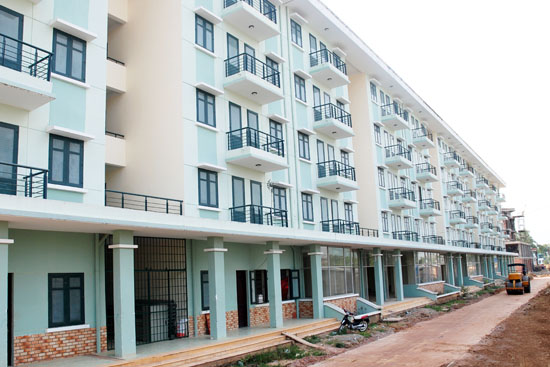What are the regulations on severance tax rates in Vietnam?

Regulations on severance tax rates in Vietnam (Internet image)
1. Severance tax-liable objects in Vietnam
Article 2 of the Law on Severance tax 2009 stipulates severance tax-liable objects as follows:
- Metallic minerals.
- Non-metallic minerals.
- Crude oil.
- Natural gas, coal gas.
- Natural forest products, other than animals.
- Natural aquatic products, including marine animals and plants.
- Natural water, including surface water and groundwater.
- Natural swallow's nests.
- Other resources prescribed by the National Assembly Standing Committee.
2. Severance tax payers in Vietnam
In Article 3 of the Law on Severance tax 2009, severance tax payers are prescribed as follows:
- Severance tax payers include organizations and individuals that exploit severance tax-liable natural resources.
- In some cases, severance tax payers shall be defined as follows:
= For a mining enterprise established on the basis of joint venture, the joint-venture enterprise shall pay severance tax:
= For Vietnamese and foreign parties to a business cooperation contract to exploit natural resources, the parties' liability to pay severance tax must be specified in such contract:
= In case an exploiter conducts small-scale exploitation of natural resources and sells them to a principal purchaser that has a written commitment or an approval to declare and pay severance tax on the exploiter's behalf, the principal purchaser shall pay severance tax.
3. Severance tax rates in Vietnam
Pursuant to Article 7 of the Law on Severance tax 2009, the severance tax rates are as follows:
- The royalty rate bracket schedule is prescribed as follows:
|
No. |
Group or category of natural resource |
Severance tax rate (%) |
|
I |
Metallic minerals |
|
|
1 |
Iron and manganese |
7-20 |
|
2 |
Titan |
7-20 |
|
3 |
Gold |
9-25 |
|
4 |
Rare earths |
12-25 |
|
5 |
Platinum, silver and tin |
7-25 |
|
6 |
Wolfram and antimony |
7-25 |
|
7 |
Lead, zinc, aluminum, bauxite, copper and nickel |
7-25 |
|
8 |
Cobalt, molybdenum, mercury, magnesium and vanadium |
7-25 |
|
9 |
Other metallic minerals |
5-25 |
|
II |
Non-metallic minerals |
|
|
1 |
Soil exploited for ground leveling and work construction |
3-10 |
|
2 |
Rock, except rock used for lime baking and cement production; gravel; sand, except sand used for glass-making |
5-15 |
|
3 |
Soil used for brick-making |
5-15 |
|
4 |
Granite and refractory clay |
7-20 |
|
5 |
Dolomite and quartzite |
7-20 |
|
6 |
Kaolin, mica, technical quartz, and sand used for glass-making |
7-15 |
|
7 |
Pyrite, phosphorite, and stone for lime baking and cement production |
5-15 |
|
8 |
Apatite and serpentine |
3-10 |
|
9 |
Pit anthracite coal |
4-20 |
|
10 |
Open-cast anthracite coal |
6-20 |
|
11 |
Lignite and fat coal |
6-20 |
|
12 |
Other coals |
4-20 |
|
13 |
Diamond, ruby and sapphire |
16-30 |
|
14 |
Emerald, alexandrite and black precious opal |
16-30 |
|
15 |
Adrite, rodolite, pyrope, berine. Spinel and topaz |
12-25 |
|
16 |
Bluish-purple, greenish-yellow or orange crystalline quartz; chrysolite; white or scarlet precious opal; feldspar; birusa; and nephrite |
12-25 |
|
17 |
Other non-metallic minerals |
4-25 |
|
III |
Crude oil |
6-40 |
|
IV |
Natural gas and coal gas |
1-30 |
|
V |
Natural forest products |
|
|
1 |
Timber of group I |
25-35 |
|
2 |
Timber of group II |
20-30 |
|
3 |
Timber of groups III and IV |
15-20 |
|
4 |
Timber of groups V, VI, VII and VIII and of other categories |
10-15 |
|
5 |
Tree branches, tops, stumps and roots |
10-20 |
|
6 |
Firewood |
1-5 |
|
7 |
Bamboo of all kinds |
10-15 |
|
8 |
Sandalwood and calambac |
25-30 |
|
9 |
Anise, cinnamon, cardamom and liquorice |
10-15 |
|
10 |
Other natural forest products |
5-15 |
|
|
Natural aquatic resources |
|
|
1 |
Pearl, abalone and sea-cucumber |
6-10 |
|
2 |
Other natural aquatic resources |
1-5 |
|
VII |
Natural water |
|
|
1 |
Natural mineral water, natural thermal water and refined natural water, bottled or tinned |
8-10 |
|
2 |
Natural water used for hydropower generation |
2-5 |
|
3 |
Natural water used for production and business activities, except water mentioned at Points 1 and 2 of this group |
|
|
3.1 |
.Surface water |
1-3 |
|
3.2 |
Groundwater |
3-8 |
|
VIII |
Natural swallow's nests |
10-20 |
|
IX |
Other resources |
1-20 |
- Specific severance tax rates for crude oil. natural gas and coal gas shall be determined as partially progressive based on their daily exploited average output.
- Pursuant to Clauses 1 and 2 of Article 7 of the Law on Severance tax 2009, the National Assembly Standing Committee shall stipulate specific severance tax rates for each category of natural resource in each period on the following principles:
= Ensuring conformity with the list of groups and categories of natural resource and within the severance tax rate bracket prescribed by the National Assembly:
= Contributing to the state management of natural resources; protection, exploitation and rational, economical and effective use of natural resources:
= Contributing to assuring state budget revenues and market stabilization.
Ngoc Nhi
- Key word:
- severance tax rates in Vietnam
 Article table of contents
Article table of contents





.Medium.png)
.Medium.png)
.Medium.png)
.Medium.png)
